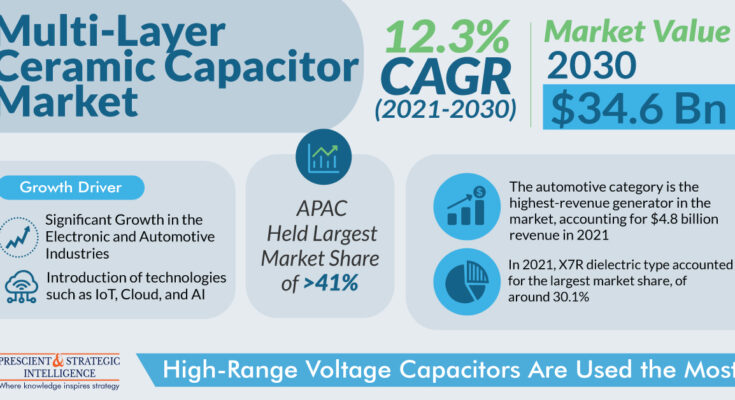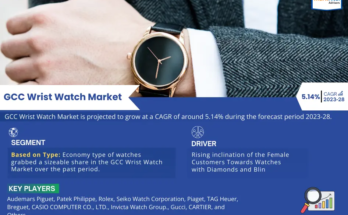The multi-layer ceramic capacitor industry generates $12.2 billion revenue in 2021, and it is projected to garner $34.6 billion revenue in 2030, advancing at a rate of 12.3% in the coming future.
General capacitors are massively used capacitors, with their availability in a wide range of sizes and capacitances propelling the industry. Thus, they capture an extensive share of the industry, and it is projected to reflect rapid growth, accounting for 12.3% in the near future.
Moreover, it is led by the rising requirement for general capacitors in various applications, such as cellular cell phones, memory modules, DC-DC converters, televisions, and LCDs.
In addition, the universal capacitors reduce noise from electronic circuits, and their small size facilitates the ease of installation of the electronic equipment.
The automotive category generates significant industry revenue, accounting for $4.8 billion revenue, and it is projected to rise at a 12.4% rate in the near future. The major factors that fuel the industry growth are rising EV adoption, government regulations mandating ADAS systems, and increasing smart technologies implementation in automotive manufacturing.
The MEMS introduction linked with ADAS, connected cars development, and technical improvements in IoT equipment and infotainment in the automotive industry propel the demand for electronic control units in automobiles, which in turn, fuels the high-capacitance MLCCs demand, and causes multi-layer ceramic capacitor industry propulsion.
The rising usage of electronic components in automobiles, such as engines, powertrains, and infotainment devices boost the requirement for MLCCs. In fact, the number of MLCCs used in electronic vehicles is extensively higher than the number of conventional vehicles. The shift of automobiles from internal combustion engines to battery electric vehicles fuels the MLCCs usage in five folds. More than 10,000 MLCCs are projected to be utilized in the BEV.
For instance, more than 9000 MLCCs are used in Model 3 of TESLA (US), while 10,000 MLCCs are utilized in Model S and X. Therefore, the growing demand for such components in automobile manufacturing companies results in MLCC producers to enhance the performance of automotive-grade MLCCs.
The X7R dielectric capacitor captures a significant share of the industry, accounting for 30.1% due to its high-temperature stability, and functionality. In addition, ceramic dielectric capacitors work well in frequency-discriminating circuits, including decoupling and bypass applications.
Such dielectric MLCCs are also used in other applications, including transient voltage suppression and filtering. All these factors result in boosting the multi-layer ceramic capacitor industry.
In addition, the X5R category is predicted to experience rapid growth in the near future, accounting for 14.2%. It is led by the rising popularity of mobile devices, such as portable gadgets, wearables, automobile-mounted electronics, smartphones, and gaming machines that fuel the demand for X5R MLCCs.
APAC dominates the industry, accounting for $5.1 billion. The regional industry is projected to retain its dominance in the near future, accounting for 13.0% growth. It is led by surging renewable energy products and MLCC-based electronic components usage. It is led by growing MLCCs demand from end-use sectors, which results in enhanced capacitance levels and capacitors’ shrinking.
Therefore, the rising usage of capacitors in EVs fuels the multi-layer ceramic industry’s growth.




